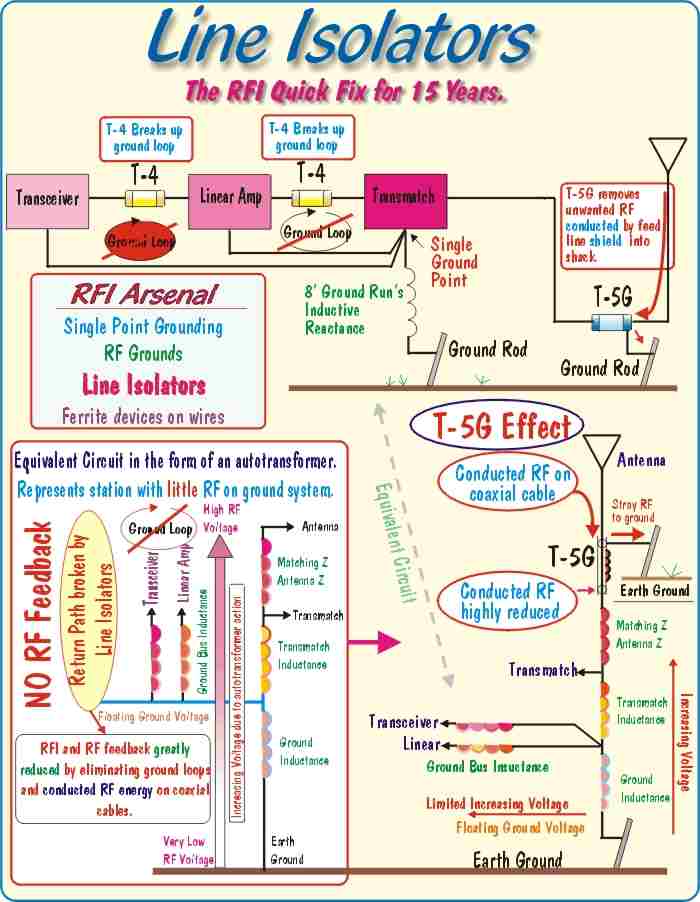
A System View of the Line Isolator.

|
The is a low resolution rendention of a display panel used in our hamfest booth display. I have to say that the high difinition color version looks a lot better, but I didn't think you would want to download a 4 meg file! The illustration at the top of the page consisting of a transceiver, linear amplifier, and a transmatch. This hamshack has a full complement of T-4 and T-5 Line Isolators installed. The goal of the installed Line Isolators is to break up all RF ground loops and block conducted RF coming into the hamshack via the coaxial cable. In the block on the bottom left is an equivalent circuit of the station with inductors representing the Line Isolators, transmatch inductance and the antenna itself. Shading represents the level of RF as a result of the floating ground system. Ground inductance includes the ground system inefficiencies, especially the ground strap, braid, or wire connecting the ground system to the station components. The longer and smaller the wire, strap, or braid, the higher the effective inductance. The ground inductance combined with the transmatch and antenna system with their own inductances form an autotransformer. The station ground is tapped into the autotransformer at some point above ground. Thus, the station ground floats at some value of RF voltage. Line Isolators effectively prevents RF ground loops by isolating interconnecting coax ground connections from the ground sytem. Remember, each piece of equipment is connected directly to the transmatch with a heavy ground strap. Doing so creates "single point" grounding. Interconnecting the station equipment with the interconnecting coaxial cables creates "loops." If the RF ground system is inadaquate, RF ground loops occur and RFI problems arise. Remember that an effective d.c. ground is not necessarily a good RF ground. Check this out in my notebook. In the diagram on the bottom right is the equivalent circuit of a T-5G installed at the same station. As you can see, RF conducted back to the shack by the outer surface of the coaxial cable's shield is routed directly to ground. Looking toward the station equipment is a very high inductance which greatly reduces RFI. Combined, the T-4 and T-5's are capable of solving some very tricky RFI problems. |